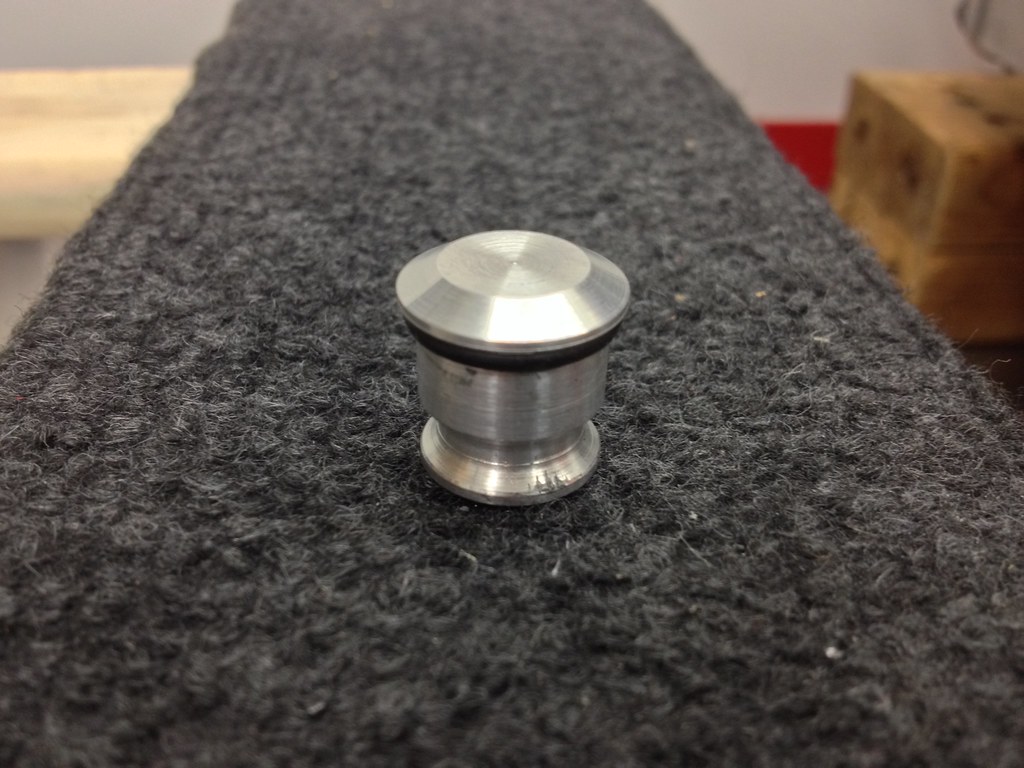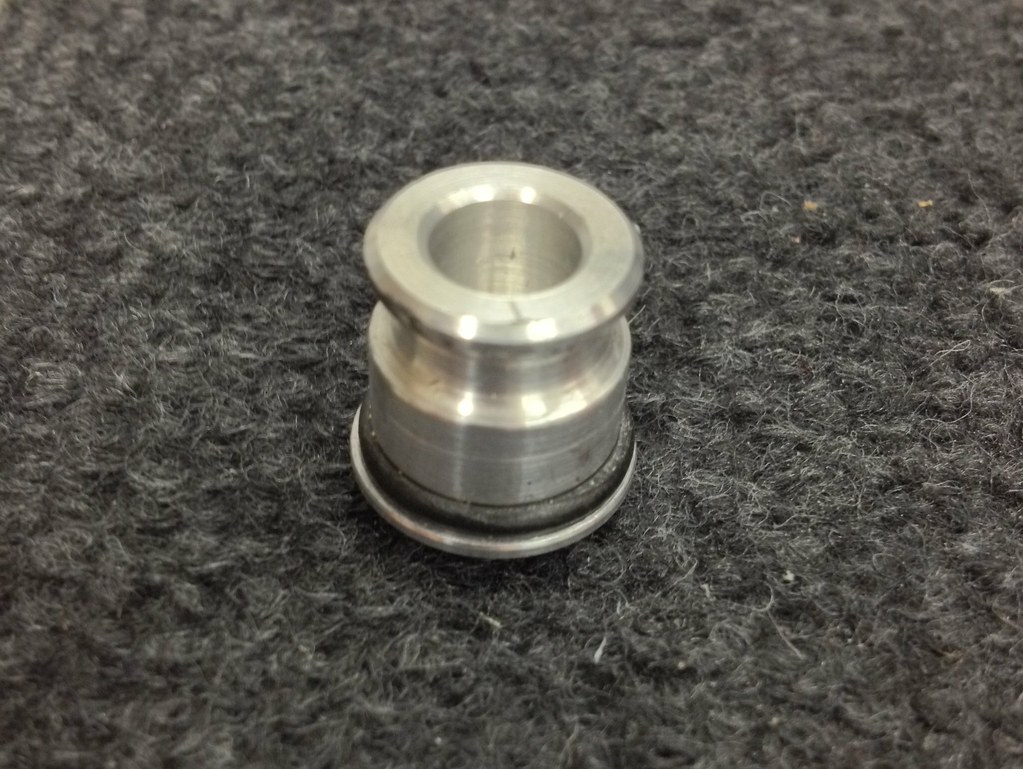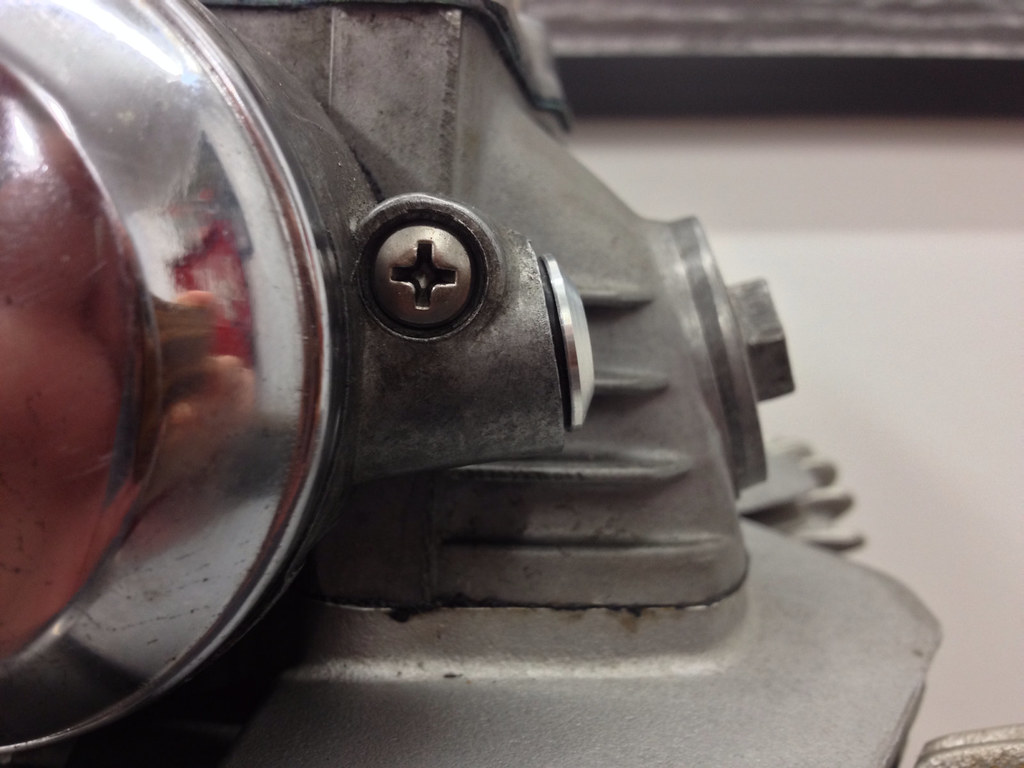Re: vintage race CB350 - almost ready for paint
My bike is being built as a WERA V1 backmarker as I've made too many changes for 350GP but not enough to run at the front of V1 and I don't care what place I finish. I built the bike I wanted and I will continue to develop it over the coming years as money allows. I will also run AHRMA Formula 250 on occassion.
WERA and AHRMA both specify minimum requirements for safety wiring. Still wondering if it's worth the effort to do the engine side covers or not. Doing so would be going above and beyond the minimum but “If in doubt, lockwire it.” I'd prefer not to.
WERA
- axles or axle nuts
- oil filler caps
- kickstarter retaining bolts
- axle caps and/or pinch bolts
- oil drain plug(s)
- removable exhaust baffles
- brake caliper bolts
- oil gallery plugs*
- radiator caps
- brake torque arms
- oil lines
- coolant drains
- speedo and tach cables
- spin on oil filters/filter bolts
- any pressure fed lubricant line
- fork oil drain screws/bolts*
- rear exhaust mount(s) (all)
- brake pad retaining pins*
*may be secured by silicone glue or H/D weather-strip adhesive in lieu of wiring.
AHRMA
-All fluid plugs and fittings with oil or coolant behind them must be securely fastened or safety wired.
As a general rule of thumb, “If in doubt, lockwire it.” Note: Only stainless steel lockwire may be used. The following regulations apply in addition to those listed above.
a) Primary case filler, drain and level-check plugs must be lockwired.
b) Crankcase filler, drain and level plugs must be lockwired.
c) Transmission filler, drain and level-check plugs must be lockwired.
d) Any primary case, crankcase or transmission inspection plug must be lockwired.
e) Any primary case, crankcase or transmission overflow or vent hoses must be lockwired.
f) Oil filter nuts and oil filter plugs must be lockwired.
g) Fuel tank overflow lines must be secured and have a catch bottle or one-way valve provided.
h) Lockwiring of carburetor drain plugs, or securing with a fuel-proof sealant, is encouraged.
i) All flexible oil lines must be a reinforced oil and gas resistant hose, and must be secured by lockwire as secondary security, in addition to a swaged fitting or hose clamp. Total-loss oiling systems must be equipped with unbreakable catch bottles and/or a “select pad” diaper system.
j) All fuel and oil lines must be securely clamped or secured by other acceptable means, and will be pull-tested during tech inspection.
k) All fork drains must be safety wired or securely taped.
l) Exhaust systems must be securely mounted and bolts lockwired. A secondary security system is encouraged and may be required at the Tech Inspector’s discretion.
m) Brake torque arm bolt lockwiring is required.
n) If not lockwired, axle nuts must be secured with a cotter pin or other acceptable means.
o) Foot brake pedal pivot bolts and nuts must be lockwired.
p) All brake rods and cables with threaded adjusters must be wired or cotter-pinned to prevent the loss of the adjuster nut.
q) Throttle cable(s) must be lockwired to the carburetor linkage or body.
r) All disc brake caliper attaching bolts must be lockwired.














